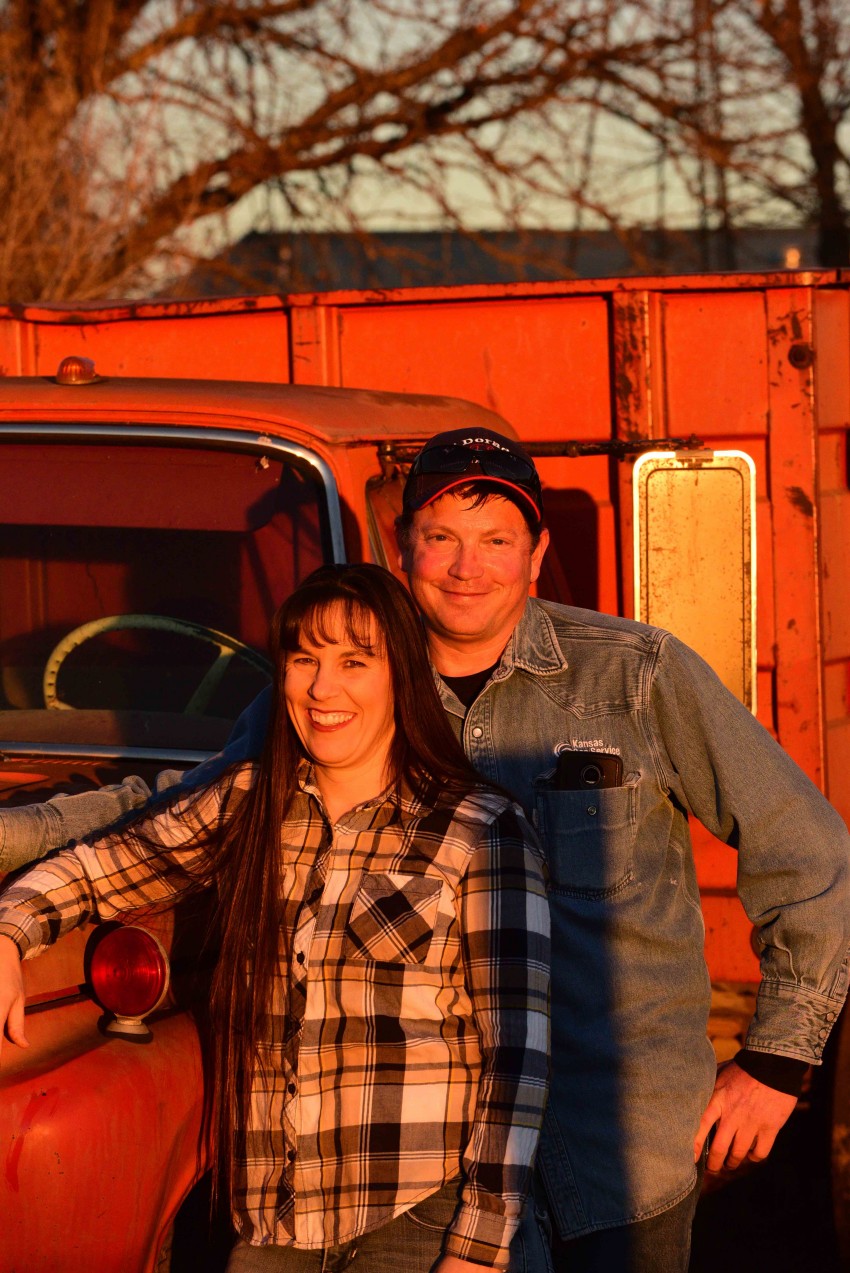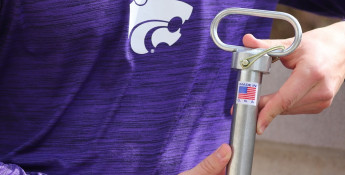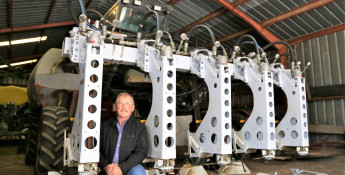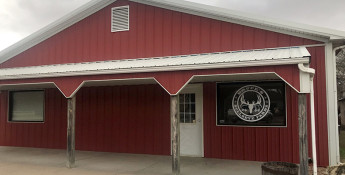By Rick McNary on January 8, 2019
Becoming a Farmer
The Bruce family exemplifies the hard work and dedication of Kansas farmers and ranchers
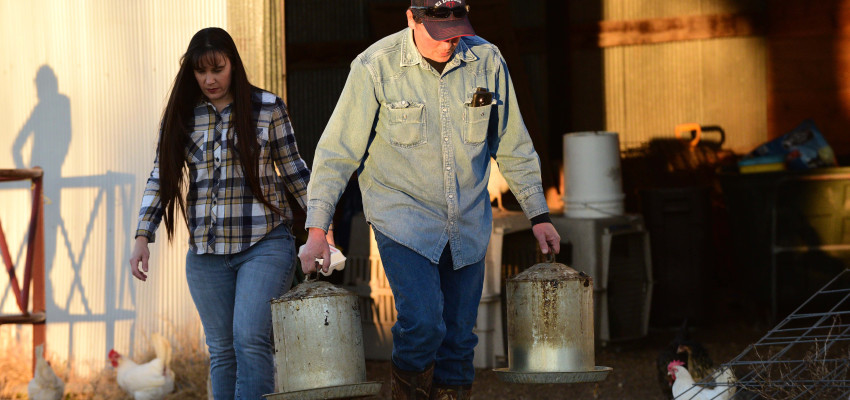
How do you start farming and ranching when you have no experience, only a dream? Just ask Joel and Laurie Bruce of Augusta.
“I had never seen an animal being born until our cow gave birth,” Laurie says. “After the first calf came out, I told Joel that something was wrong with her, but then a second calf came out. I was so excited, I Facebook Lived it.”
Joel and Laurie began dreaming of owning land shortly after they started dating. Now, after 25 years of marriage, they own two tracts totaling 140 acres.
“When I was a kid growing up in Arkansas, we lived on 30 acres that our family inherited,” Joel says. “We were dirt poor and the kids would make fun of me for living south of the tracks or having patches on my clothes. I looked forward to getting off the bus each day and being on our property. I hunted, fished and explored every inch. That land meant something to me.”
“Each Sunday for 25 years we looked in the paper or online for property,” Lauri says. “We purchased the first 80 acres and soon after the people who owned 60 acres across the road approached us. A friend gave us a horse named Bullseye, so we named our farm Bruce’s Bullseye Farm.”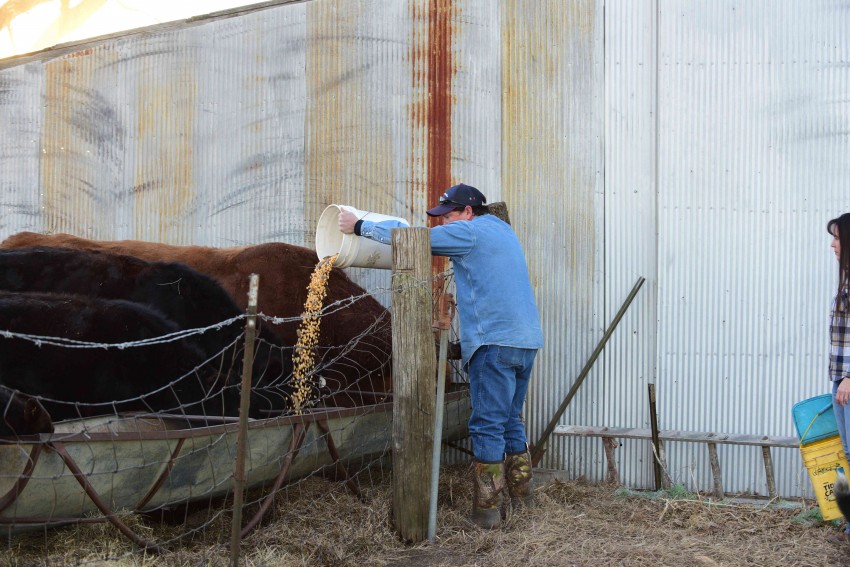
Many first-time farmers are interested in getting started. On a national level, agricultural groups are doing what they can to support their efforts. The USDA First Steps program provides a checklist and guidance for anyone wanting to farm for the first time.
The USDA classifies beginning farmers as those owning a farm 10 years or less. The Census of Agriculture, conducted every five years, indicated there were 522,000 beginning farmers in the 2012 census; approximately 25 percent of the 2.1 million farmers. The 2017 census is due for release in February 2019.
“When we acquired the land, the first animals other than Bullseye were two bucket calves we had to learn how to feed,” Laurie says. “We made a lot of trips to the local veterinarian and she was great about teaching us how to care for them.
“I didn’t realize how attached people become to their animals until our first goat died. He was just a little guy and that was the summer of all the grass fires and our goat shed caught on fire. I cried for days over that little goat.”
The challenges for beginning farmers is the cost of land and equipment. Like any business, the investment requires five to seven years to see any kind of return-on-investment (ROI). The Bruces wanted to own their land debt-free, so they scrimped and saved for 25 years to be able to do so. For those wanting to finance, the USDA makes available Beginning Farmers and Ranchers Loans. In addition, there are farm incubators located across the U.S. with the purpose of helping people start.
“We have 30 acres of the land we can grow crops on that we farm on shares with a guy who has the equipment,” Joel says. “We also have 40 acres of hay that I put up. But that’s not enough to make a living on.”
Like many beginning farmers, the Bruces have regular-paying jobs. Joel works for Kansas Gas Service and Laurie is the Development Math Coordinator for Butler Community College.
“I grew up poor, too,” Laurie says. “I knew education was my way out, so my first degree was in Computer Aided Drafting (CAD). But when we started having kids, we made a choice for me to stay home. We had our kids four years apart and, four years after the last one, I told Joe that it was either time to have another baby or for me to go back to school. He suggested I go enroll. I went back for a teaching degree so I could be at home with the kids in the summer. We’ll never be a big farm and we like our jobs, so this works well for us.”
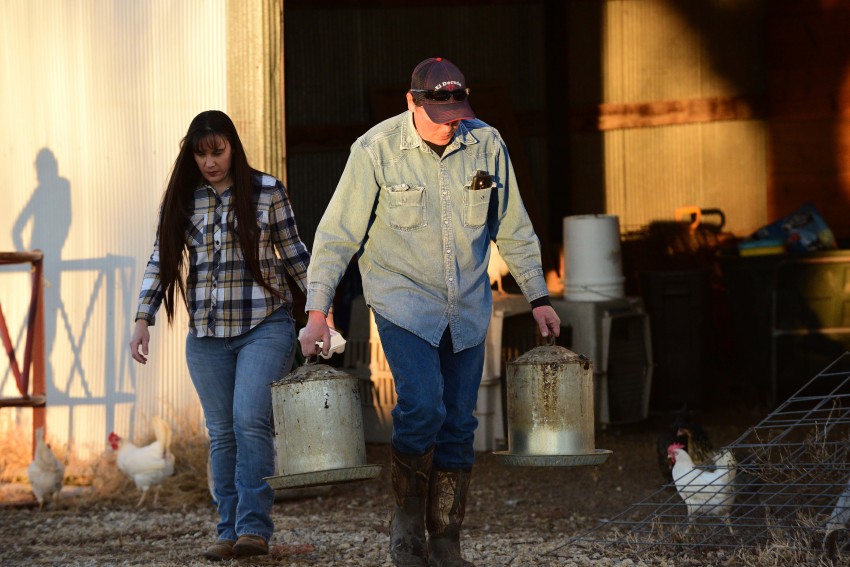 One of the many challenges for the Bruces is to determine the direction of the farm. Almost by accident, they discovered a market for which they are now planning their farm around: homemade jelly.
One of the many challenges for the Bruces is to determine the direction of the farm. Almost by accident, they discovered a market for which they are now planning their farm around: homemade jelly.
“We kind of go at things backwards,” Laurie says. “My friend owns the Apple Jack Pumpkin Patch and told me I should take my jelly to sell at the Patch. We sold out immediately and now we sell 20 different kinds of jellies and various bread mixes.”
“When I first met Laurie, I knew I wanted to marry her,” Joel says. “But if you would have told me that 25 years later, I’d be staying up ‘till midnight canning jelly with her, I would have thought you were crazy. Now, she even sends me off alone to my own festivals. We’re planning now to put in high tunnels so we can grow all of our own fruits and vegetables. We’re also raising beef. We want everything in our freezer and cabinets to come from our farm.”
“We’ve had a lot of people help us start,” Laurie says. “And I want to pay-it-forward by using our experiences to both shine the light on other producers and teach people who are just getting started. The group that helped us the most is the Butler County Farm Bureau. We struggled until we went to their Farm to Fork dinner and the connections we made really helped us take off.”
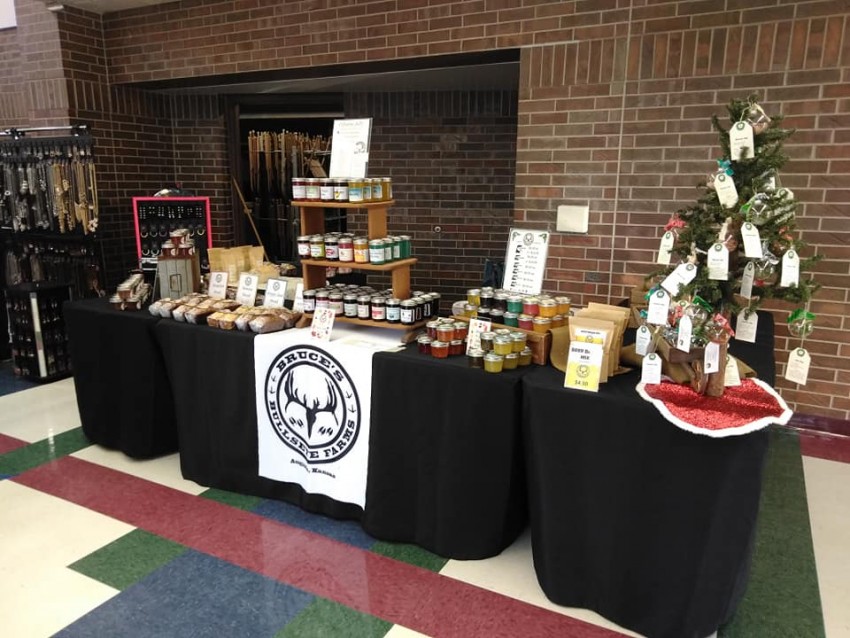 Laurie is currently working on her master’s degree in organizational leadership. For one of her assignments in qualitative research, she chose the concept of connecting producers to consumers.
Laurie is currently working on her master’s degree in organizational leadership. For one of her assignments in qualitative research, she chose the concept of connecting producers to consumers.
“We did a farmer’s breakfast in Whitewater and used some of the eggs from our farm, milk from the local Keriel Dairy and meat from Walnut Valley Packing in El Dorado,” Laurie says. “That’s the kind of things we want to do with our jellies; source locally and draw attention to others who are growing.”
The Bruce family is an example of the creative, entrepreneurial, hard-working farmers whose dreams are directly coupled to the land. When I look at land, I notice the contour and what sits on top of the ground. However, a farmer sees a complex community of living organisms that produce life. I see a photograph; they see an ecosystem.
When a farmer walks across the land, each step they take penetrates the roots of their soul more deeply into the soil. Farmers are joined spiritually to their land and this union stirs dreams within them that people like me don’t understand.
As you listen to Joel talk, it’s easy to drift back in time and see a little boy trundling down off an old yellow bus, grabbing a biscuit from the kitchen and taking off across the land on a great, new adventure.
Along the way, that little boy found a girl to share his dreams.
And now they take off together across their own land on a great, new adventure.
Only this time, there is jelly on the biscuit.

